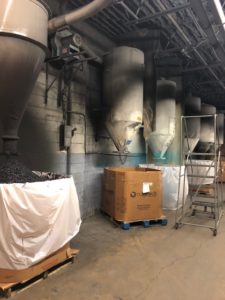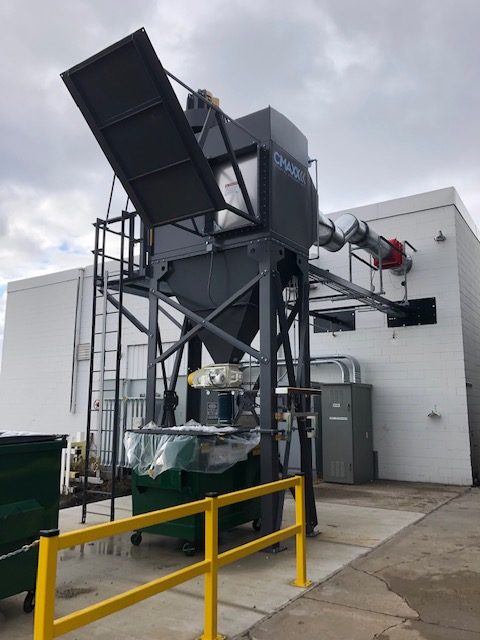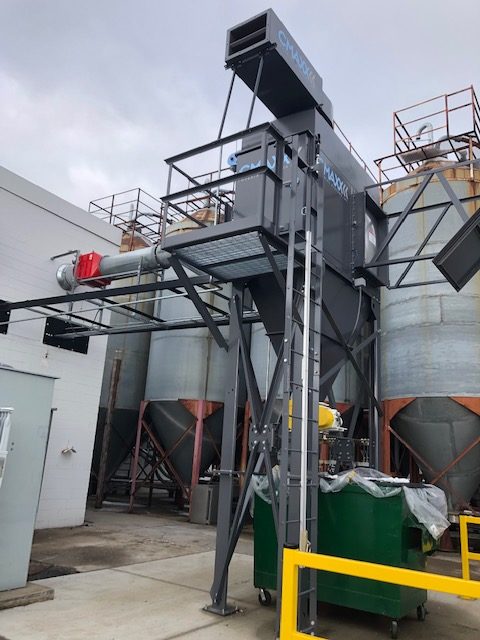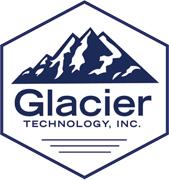 A plastics company in Minnesota needed a solution for a plastic dust problem that was threatening the health and safety of the company’s work environment. Clouds of plastic dust were creating numerous problems, including a risk to the employees, who had to wear respirator masks while working in the affected areas.
A plastics company in Minnesota needed a solution for a plastic dust problem that was threatening the health and safety of the company’s work environment. Clouds of plastic dust were creating numerous problems, including a risk to the employees, who had to wear respirator masks while working in the affected areas.
During the application development process, the plastic dust was tested and determined to be a combustible dust. A KST value of 176 meant the dust was at risk for explosion.
Dust testing is done by placing the dust in a container that can measure pressure. Pmin is the smallest amount of pressure that ignition of the dust can produce. Pmax is the maximum amount of pressure that explosive ignition can produce. The Pmax indicates how much damage the dust is capable of doing inside a closed container, such as ductwork or a dust collector.
 KST is a measurement of dust’s explosion pressure, or how strong the potential explosive force of the dust. It is a standard measurement for dust collection system design purposes and dictates what type of dust collector and explosion isolation equipment will be necessary. Any dust with a KST value greater than 0 is considered to be combustible.
KST is a measurement of dust’s explosion pressure, or how strong the potential explosive force of the dust. It is a standard measurement for dust collection system design purposes and dictates what type of dust collector and explosion isolation equipment will be necessary. Any dust with a KST value greater than 0 is considered to be combustible.
KST Class 1
KST value of 0 to 200 is considered to have a weak explosion potential. This class includes many metal dusts. It is important to keep in mind that a “weak explosion” still has catastrophic potential. The Imperial Sugar explosion was caused by sugar with a KST Class 1 value.
KST Class 2
 KST from 200 to 300 is considered a strong explosion potential, and can include things like cellulose dust, other organic fine dust, and some metals and plastics.
KST from 200 to 300 is considered a strong explosion potential, and can include things like cellulose dust, other organic fine dust, and some metals and plastics.
KST Class 3
A KST over 300 has very strong explosion potential, and can include aluminum and magnesium dust. Chemical protection is required.
Any dust with any KST above zero is potentially combustible and will require appropriate fire and explosion prevention. For the plastics manufacturer, our team selected an explosion isolation valve, a rotary airlock, and an explosion vent (equipped with a deflector plate) to manage the explosion risk.
The dust collectors selected for the job were two CMAXX collectors – an 8 filter unit and a 12 filter unit. Each collector operates with a variable frequency drive to allow for expansion. Each of the fan motors is currently running at about 50% providing excellent efficiency.
The contractor for this project brought Glacier Technology in for consideration due to our team’s extensive experience with combustible dust. Ultimately we were selected due to our knowledge and ability to get the necessary combustible dust equipment. Everything the Glacier team installed is NFPA, OSHA, and insurance compliant.
Ultimately, the customer was extremely pleased with the project results, and said that it accomplished just what they needed. Employees are happy to be able to work in a safer environment with clean air. The customer was so satisfied, they plan to work with Glacier Technology in the near future to add another dust collector in their facility.
